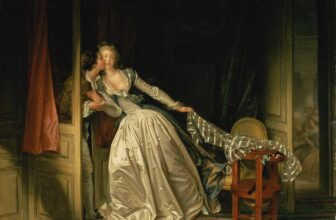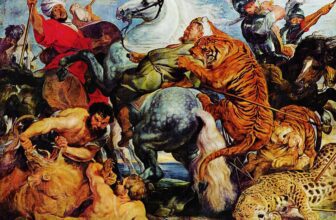
A Journey Through Art, History, and Legacy
Ludwig van Beethoven. The name alone conjures images of stormy symphonies, defiant genius, and the uncompromising expression of human emotion through music. But beyond the sound and score lies a figure shrouded in mystery and myth , a man whose personal life remains as enigmatic as his monumental compositions. While his music has echoed through centuries, the image of Beethoven, his face and expression, has become iconic in its own right , largely due to a single, powerful painting.
Who Was Beethoven?
Before diving into the artistic renderings of Beethoven, it’s important to understand the man himself , his life, his character, and the forces that shaped him.
Born in Bonn, Germany, in December 1770, Ludwig van Beethoven was the second-oldest child in a musical family. His grandfather had been a respected Kapellmeister (music director), and his father, though more troubled and less talented, pushed Beethoven to become a prodigy in the mold of Mozart. The young Beethoven showed immense talent early on, mastering the piano, organ, and violin by his early teens.
At 17, he traveled to Vienna, the music capital of Europe, hoping to study with Wolfgang Amadeus Mozart. Though it’s unclear whether the two met, Beethoven’s journey into Vienna’s musical elite was inevitable. His early compositions demonstrated both classical precision and a raw emotional intensity that would become his trademark.
But Beethoven’s story is not one of smooth ascension. In his late twenties, he began to lose his hearing , an unthinkable tragedy for a composer. Instead of succumbing to despair, Beethoven produced some of the most revolutionary works of the 19th century, including the Eroica Symphony, the Fifth Symphony, the Ninth Symphony with its choral “Ode to Joy,” and his deeply introspective late string quartets.
A towering figure of the Romantic era, Beethoven’s legacy as a musical revolutionary is matched by his reputation as a solitary, deeply passionate man , and it’s that image which has been preserved in paint.
Are There Paintings of Beethoven?
Yes , and many of them. Despite the scarcity of high-quality portraiture in Beethoven’s early years, the composer sat for several painters during his lifetime. These works range from early, idealized depictions to later, more realistic renderings that captured the turmoil, brilliance, and eccentricities of his personality.
In the days before photography, portraiture was a vital way of commemorating great individuals. As Beethoven rose to prominence in the early 1800s, artists began to seek him out , and he, in turn, saw portraiture as a way to shape his public image. While he was often reluctant to sit for extended periods, several paintings of him were completed during his lifetime.
Some are rough and rushed sketches; others, grand and dignified. But one painting in particular has come to define the visual legacy of Beethoven more than any other.
Who Painted the Most Famous Beethoven Portrait?
The most iconic and widely reproduced portrait of Beethoven was painted by Joseph Karl Stieler in 1820. This painting has become the definitive image of the composer , a symbol of artistic defiance and passionate genius.
Joseph Karl Stieler was a renowned German painter, particularly well-known for his formal court portraits. He served as the official painter to the Bavarian royal family and created hundreds of portraits of prominent individuals, including kings, queens, and great artists of the day.
When Stieler painted Beethoven, the composer was already in his fifties and profoundly deaf. His public persona had evolved into that of a misunderstood genius , temperamental, fiercely independent, and wholly devoted to his art. This psychological complexity is vividly present in Stieler’s portrait.
What Does the Stieler Portrait Depict?
The portrait is arresting. Beethoven is shown seated, slightly turned, with a wild mane of hair framing his intense, furrowed face. He wears a black coat with a red scarf , a bold splash of color against the dark, brooding background. In his hand, he holds a quill and a sheet of music paper titled “Missa Solemnis” , one of his late masterpieces.
This is not a romanticized, idealized depiction. Stieler’s Beethoven is fierce, unsmiling, almost glowering at the viewer. His gaze is penetrating, intense , the eyes of a man who has stared down fate and refused to yield. It captures the essence of the man described by his contemporaries: uncompromising, stubborn, brilliant, and tormented.
It is also deeply symbolic. By showing Beethoven in the act of composing, Stieler pays homage to the very force that sustained the composer through his deafness and isolation: his creative genius. The sheet music anchors Beethoven in his art, as if to say , this is what defines him, not his disability or suffering.
Why Is the Stieler Portrait So Famous?
There are several reasons this portrait achieved its legendary status:
Timing and Style: Painted during Beethoven’s lifetime, it offers a rare, contemporary likeness. Unlike later idealized versions, this is how Beethoven looked to those who knew him.
Emotional Impact: The raw intensity of Beethoven’s expression speaks volumes. The painting goes beyond likeness to convey his inner world , and that resonates with audiences across generations.
Cultural Dissemination: The portrait became widely reproduced in books, magazines, stamps, and posters throughout the 19th and 20th centuries. As Beethoven’s music gained canonical status, the Stieler portrait was frequently used to represent him visually.
Symbolism: The quill, the music manuscript, the serious expression , all conspire to create a visual narrative of Beethoven as the archetypal Romantic genius: misunderstood, isolated, but triumphant through art.
In short, it’s not just a portrait , it’s a myth in oil paint.
Where Is the Beethoven Painting by Joseph Karl Stieler Located?
The original Stieler portrait of Beethoven is housed in the Beethoven-Haus in Bonn, Germany, the composer’s birthplace and a center of Beethoven scholarship. The Beethoven-Haus is more than just a museum , it’s a place of pilgrimage for lovers of classical music from around the world.
Founded in 1889 by the Beethoven-Haus Association, the museum contains a vast collection of manuscripts, instruments, letters, and memorabilia related to the composer. The Stieler portrait is one of its crown jewels , displayed in a special room that emphasizes its historical and artistic significance.
Visitors to the museum are often struck by the immediacy of the painting. Seeing it in person , the texture of the brushwork, the vibrancy of the colors, the size of Beethoven’s gaze , adds a dimension that no reproduction can match. It’s an encounter not just with a portrait, but with a presence.
Other Notable Portraits of Beethoven
While the Stieler painting is the most famous, it’s far from the only image of Beethoven. Over the years, many artists attempted to capture his likeness. Each offers a different perspective, shaped by the artist’s style and the period in which it was created.
1. Mähler’s Portrait (1804–1805)
The earliest significant portrait of Beethoven was painted by Christian Horneman in 1803 and then by Willibrord Joseph Mähler around 1804–1805. Mähler’s depiction presents Beethoven as a romantic, youthful figure , calm, introspective, and far removed from the stormy figure later immortalized by Stieler.
This early painting shows a gentler side of Beethoven, before deafness and disillusionment darkened his life. It’s a valuable record of the composer in his early prime.
2. Waldmüller’s Portrait (1823)
Ferdinand Georg Waldmüller, an Austrian painter, created another notable portrait of Beethoven around 1823. This portrait is more stylized and less psychologically intense than Stieler’s but still contributes to the visual canon of the composer.
3. Sculptures and Death Masks
Beyond paintings, Beethoven’s likeness has been preserved in sculpture and even posthumous death masks. These offer a forensic level of realism and are often used to compare with painted portraits for authenticity.
Beethoven’s Face as Cultural Icon
The enduring power of Beethoven’s image , particularly as captured by Stieler , cannot be overstated. His face has become a universal symbol of artistic defiance, used in posters, graffiti, pop culture, and academic books alike. From the covers of music textbooks to revolutionary posters, Beethoven’s wild hair and intense stare have come to represent the very spirit of uncompromising creativity.
Some artists and designers have even compared Beethoven’s visual legacy to that of Einstein or Che Guevara, faces that transcend biography to become archetypes. The power of this image lies in its dual message: genius and struggle, intellect and emotion, solitude and triumph.
The Man Behind the Myth, the Portrait Beyond the Paint
The story of Beethoven’s portrait by Joseph Karl Stieler is more than just a tale of brush and canvas. It is a window into a moment in time , when a deaf composer, nearing the end of his career, sat for a painter who would immortalize him not just in form, but in spirit.
This iconic painting distills the essence of Beethoven’s life: the agony of isolation, the ecstasy of creation, and the enduring power of the human will. Through it, we see not just a face, but a philosophy. Not just a composer, but a force of nature.
So the next time you hear the pounding chords of the Fifth Symphony or the soaring choral finale of the Ninth, picture the man behind the music , his eyes blazing with purpose, a quill in hand, and a heart filled with thunder.
He is not just remembered through sound. He is seen , thanks to the portrait that made Beethoven eternal.




